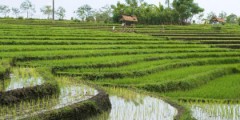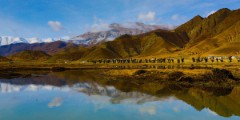Xi Jinping’s Pakistan visit: what’s left behind?
May 18, 2015
By Filippo Boni. The long-awaited visit has finally taken place. Xi Jinping’s first official visit abroad this year was to Islamabad, previously postponed due to the September 2014 dharna (sit-in) organised by Imran Khan’s PTI. “I feel as if I am going to visit the home of my brother” said Xi Jinping ahead of his …
The many forms of water security in China
November 7, 2014
Written by Darrin Magee. By some measures, China is not a water-scarce country. Per capita water resources stood at just over 2,000 cubic meters in 2013 according to the National Bureau of Statistics, with overall water availability at nearly 2.8 trillion cubic meters. Yet these figures tell only part of the story. China’s seemingly sufficient water …
China’s transboundary waters
November 4, 2014
Written by Patricia Wouters. China shares more than 50 major international watercourses with its (mostly) downstream riparian neighbours — North Korea, Russia, Mongolia, Kazakhstan, Kyrgyzstan, Tajikistan,Bhutan, Myanmar, Laos, Nepal, Pakistan (Kashmir), Afghanistan, India and Vietnam. Less than 1% of Chinese water comes from outside its borders, but it contributes significantly to river basins flowing from …
Running Dry: Water, Agriculture and Climate Change in China
November 3, 2014
Written by Christine E. Boyle. Conflicting reports on the state of China’s agricultural water use situation range from statements that China’s water shortages threaten the future food security of the nation, to optimistic reports that China’s potential gains for water use efficiency spell out great opportunity for reaching more sustainable water-use rates, and stabilizing grain …
China and the spectre of water wars in Southeast Asia
October 30, 2014
Written by Pichamon Yeophantong. In late 2013, controversy over China’s dams on the upper stretches of the Mekong River—otherwise known as the Lancang Jiang—flared up once again. Disbelief quickly spread among the communities of the Lower Mekong Basin when an acute peak in water levels during December resulted in massive flooding in parts of northern …
Beyond the Water Transfer: Five Key Challenges
Written by Sam Geall. At the end of this month, the “middle route” of China’s massive South-to-North Water Transfer project will become operational, supplying Yangtze River water from the Dangjiakou Reservoir in central Hubei province to arid Beijing for the first time. Famously proposed by Mao Zedong in 1952 to address chronic water scarcity in …
Water Security in Asia
October 28, 2014
In 2011 Anatol Lieven wrote that the ‘greatest source of long-term danger to Pakistan’ was dependence on the river Indus and climate change in general. Lieven was in no doubt that water security was a far greater than that of Islamic extremism. The politics of water, one of the major aspects of water security, are complex, far …
China and the Future of Global Governance
October 3, 2014
Written by Dr Miwa Hirono (IAPS Seminar Coordinator) The IAPS Seminar Series for the academic year 2014-2015 began with a fantastic seminar yesterday, delivered by Dr Katherine Morton, Associate Professor at the Australian National University and a Senior Associate Member of St Antony’s College, Oxford University. This seminar was a special event jointly organised by …
IAPS PhD Studentship in History
December 16, 2013
IAPS is co-funding a PhD studentship in conjunction with the Department of History, within the School of Humanities at the University of Nottingham. We invite applications for a PhD Studentship in one or more of the following areas: the history of late nineteenth- and twentieth-century East Asia (especially Japan), and the history of migration, labour, …









